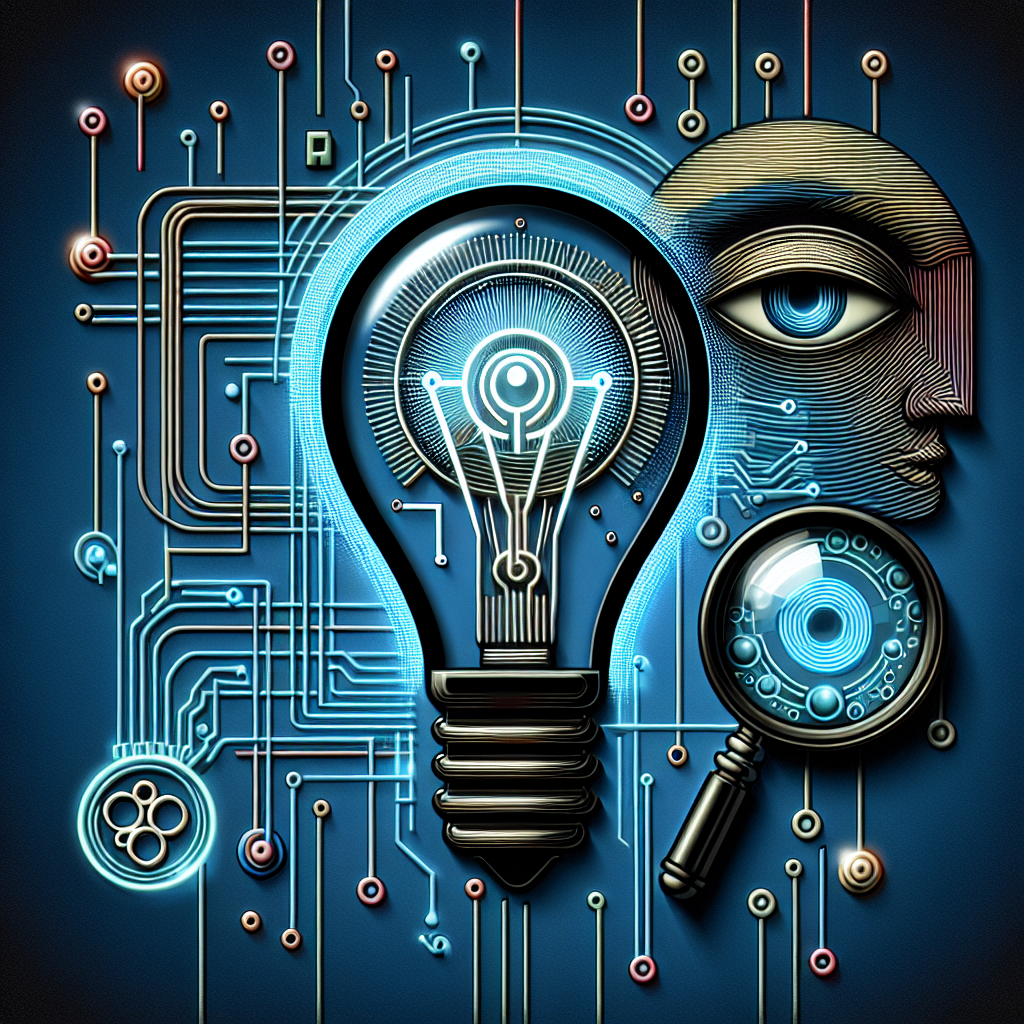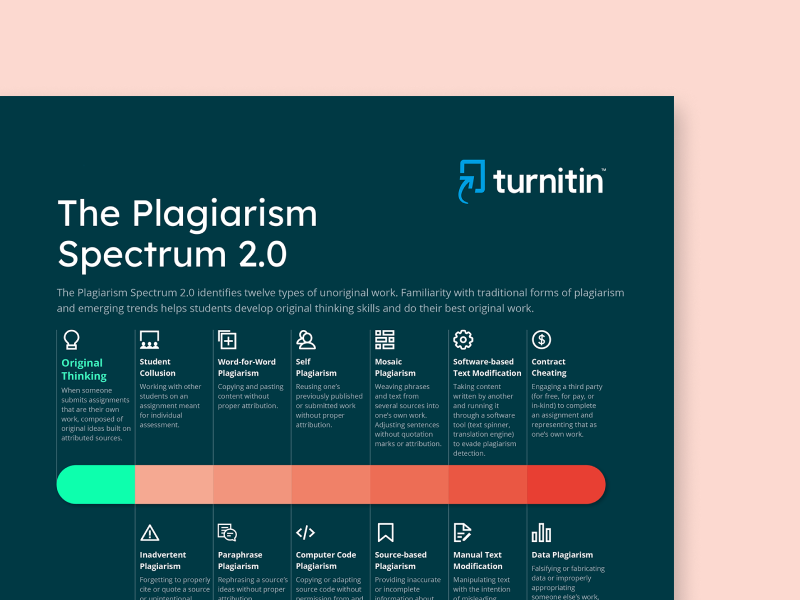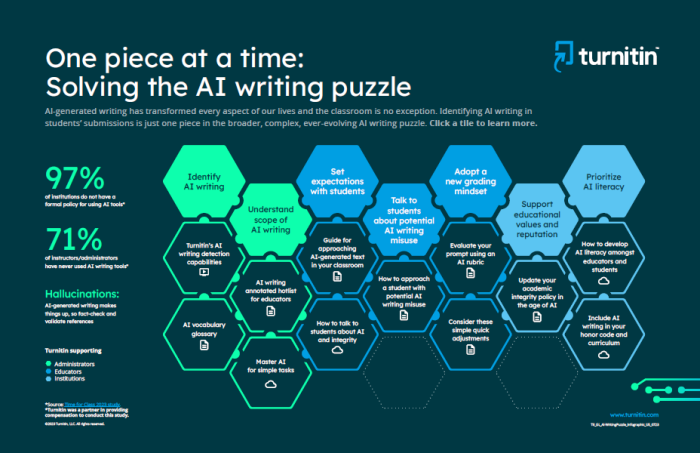Learn the secrets to uncovering AI-generated content and plagiarism with these expert tips and tools. Don’t miss out!

Image courtesy of via DALL-E 3
Table of Contents
Welcome! Today, we’re going to talk about a fascinating topic: AI-written content and plagiarism. Have you ever wondered how to tell if a piece of writing was created by a computer or if someone copied it from somewhere else? Well, that’s what we’ll explore in this article. Let’s dive in!
What is AI-Written Content?
Let’s start with AI-written content. Imagine a computer program that can write words and sentences just like a person. That’s what AI-written content is – texts generated by machines instead of humans.
What is Plagiarism?
Now, let’s talk about plagiarism. Plagiarism happens when someone takes words, ideas, or information from someone else’s work and pretends it’s their own. It’s like copying a friend’s homework and saying you did it all by yourself.
Understanding AI-Written Content
In today’s digital age, AI-written content has become increasingly prevalent. But what exactly is AI-written content, and how is it generated by computers?
How Do Computers Write?
Computers rely on algorithms and vast amounts of data to create text that mimics human writing. These algorithms analyze patterns in data to produce coherent sentences and paragraphs, making it seem like a person wrote them.
Common Uses of AI-Written Content
AI-written content can be found in various applications, such as chatbots, automatic news reports, and even personalized marketing messages. These tools help businesses efficiently generate large volumes of content to engage with their audiences.
Methods to Detect AI-Written Content
One way to detect AI-written content is to look out for odd phrases that don’t sound quite right. Sometimes, artificial intelligence might generate sentences that seem a bit strange or don’t flow naturally. If you come across sentences that sound robotic or out of place, it could be a sign that the content was created by a computer program.
Check for Repetition
Another method to identify AI-written content is to check for repetition. AI algorithms can sometimes create content that includes repeated sentences or words. If you notice the same phrases appearing multiple times throughout a piece of writing, it might be a clue that the content is not human-generated. Keep an eye out for overly repetitive language when trying to determine if AI was involved in creating the text.
Understanding Plagiarism
Plagiarism comes in various forms, but they all involve using someone else’s work and presenting it as your own. One type is direct copying, where you take someone else’s words and pass them off as yours without giving credit. Another type is called “patchwriting,” where you change a few words here and there but still keep the original structure of the text. Both of these are considered forms of plagiarism and are not allowed.

Image courtesy of www.linkedin.com via Google Images
Why Plagiarism is Bad
Plagiarism is not just frowned upon; it’s actually wrong because it’s like taking credit for something you didn’t do. When you use someone else’s work without their permission, you’re not only being dishonest, but you’re also not respecting the hard work and effort they put into creating it. It’s important to always give credit where credit is due and to create your own original work.
Methods to Detect Plagiarism
One effective way to detect plagiarism is by using online tools specifically designed for this purpose. These tools can scan your text and compare it to a vast database of existing content to highlight any similarities. By simply copy-pasting your work into these tools, you can quickly identify if there are any instances of plagiarism.
Manual Checking
Another method to detect plagiarism is by manually checking the content yourself. This involves reading through the text carefully and comparing it to the original source material. Look for any passages that seem too similar or use a different writing style than the rest of the text. By conducting a thorough manual review, you can catch any instances of plagiarism that may have slipped through automated tools.
Avoiding AI-Written Content and Plagiarism
One of the best ways to avoid both AI-written content and plagiarism is to write your own words. This means using your own ideas and expressing them in a unique way. When you write in your own words, you are creating original content that reflects your thoughts and understanding of a topic. It’s important to check your work to ensure that you are not unintentionally using phrases or sentences from sources without giving proper credit.

Image courtesy of www.turnitin.com via Google Images
Cite Sources
Another essential way to avoid AI-written content and plagiarism is to cite your sources. When you use information from books, websites, or other sources, it’s vital to give credit to the original author or creator. By citing your sources, you show respect for the work of others and demonstrate honesty in your own writing. Additionally, citing sources adds credibility to your work and helps readers understand where your information comes from.
Consequences of Using AI-Written Content and Plagiarism
Imagine you copy someone else’s homework and try to pass it off as your own. If your teacher finds out, there will be consequences. The same goes for using AI-written content or plagiarizing in real life. If someone discovers that you have used AI to write something for you or taken someone else’s work without permission, it can lead to serious trouble.
Losing Trust
When people find out that you have used AI-written content or plagiarized, they might start to doubt your honesty and integrity. Trust is an essential part of any relationship, whether it’s with friends, family, teachers, or colleagues. If they can’t trust you to do your own work or create original content, it can damage your reputation and make it hard for people to rely on you in the future.
Frequently Asked Questions (FAQs)
Not all AI written content can be easily detected. Some advanced AI programs are designed to mimic human writing styles, making it challenging to differentiate between human and AI-generated text. However, there are still some common characteristics that can help identify AI-written content, such as unusual phrases or repetitive patterns.

Image courtesy of www.turnitin.com via Google Images
Are Online Plagiarism Tools Accurate?
Online plagiarism detection tools can be highly accurate in identifying copied content. These tools compare the text in question with a vast database of existing material to check for similarities. While no tool is perfect, using reputable plagiarism checkers can significantly help in detecting plagiarized content and ensuring the originality of your work.
Want to turn these SEO insights into real results? Seorocket is an all-in-one AI SEO solution that uses the power of AI to analyze your competition and craft high-ranking content.
Seorocket offers a suite of powerful tools, including a Keyword Researcher to find the most profitable keywords, an AI Writer to generate unique and Google-friendly content, and an Automatic Publisher to schedule and publish your content directly to your website. Plus, you’ll get real-time performance tracking so you can see exactly what’s working and make adjustments as needed.
Stop just reading about SEO – take action with Seorocket and skyrocket your search rankings today. Sign up for a free trial and see the difference Seorocket can make for your website!
Conclusion
In this blog post, we have explored the world of AI-written content and plagiarism. Understanding these concepts is crucial to ensuring the integrity of your work and academic honesty.
We learned that AI-written content is generated by computer programs using algorithms and data, leading to the creation of text that may sometimes sound unnatural or odd. It is important to be able to detect AI-written content to maintain authenticity and credibility.
Plagiarism, on the other hand, involves using someone else’s work without proper citation or permission, passing it off as your own. This unethical practice can have serious consequences, including a loss of trust and credibility.
By using the methods outlined in this article to detect AI-written content and plagiarism, such as looking for odd phrases or using online tools for plagiarism detection, you can ensure that your work is original and free from academic dishonesty.
Remember, always strive to write in your own words and cite your sources properly to avoid unintentional plagiarism. By following these tips and being vigilant in your writing, you can maintain the integrity of your work and earn the trust of your peers and readers.







